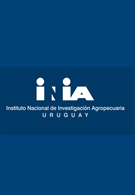The blue gum chalcid wasp, Leptocybe invasa Fisher & La Salle, 2004 (Hymenoptera:Eulophidae) is a pest native from Australia that causes economical losses in Eucalyptus plantations. It was first detected in 2011 in Uruguay. Damage resulting from L. invasa galls can be particularly severe in Eucalyptus nurseries and in young plantations. The use of biological control agents (BCA) and plant resistance have proven valuable tools in keeping L. invasa populations under control worldwide. To date, the bioecology and population dynamics of this pest in Uruguay is unknown. The objective of this work was to study the population fluctuation, distribution and management strategies for L. invasa in Uruguay. We conduct a survey among foresters. Four yellow sticky traps (YST) were distributed in an area of 0.5 ha of Eucalyptus spp. in Tacuarembó and replaced monthly from December 2015 to November 2018. Captures in YST were correlated with temperature and precipitation data. Some genotypes of Eucalyptus grandis, E. benthamii and E. grandis x E. camaldulensis hybrids recorded more damage by L. invasa. Currently, this species distributed mostly in the North and West parts of the country. Captures in YST peaked on February, May and November and was negatively linked to accumulated precipitation. This study provides key data towards the implementation of biological control of L. invasa with Selitrichodes neseri (Hymenoptera:Eulophidae) which is currently ongoing in the country.

